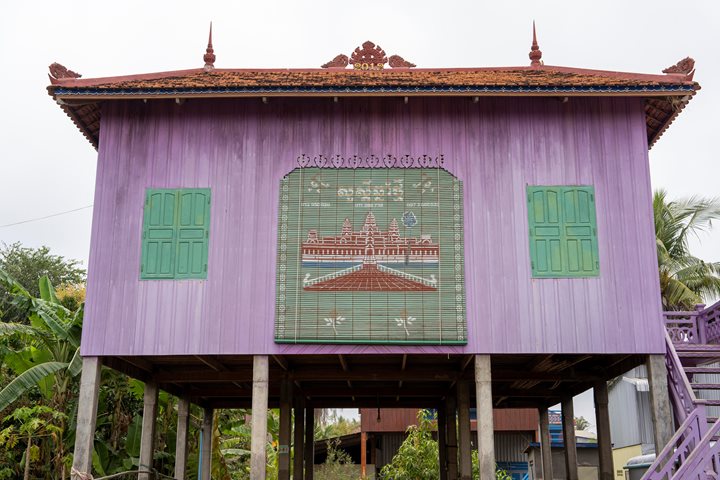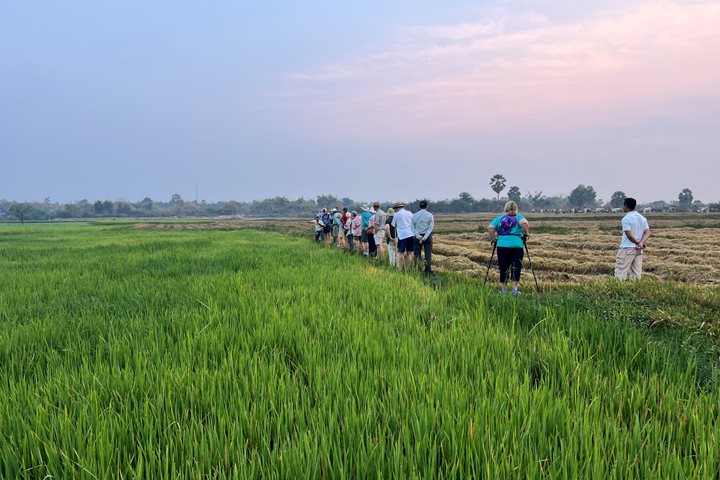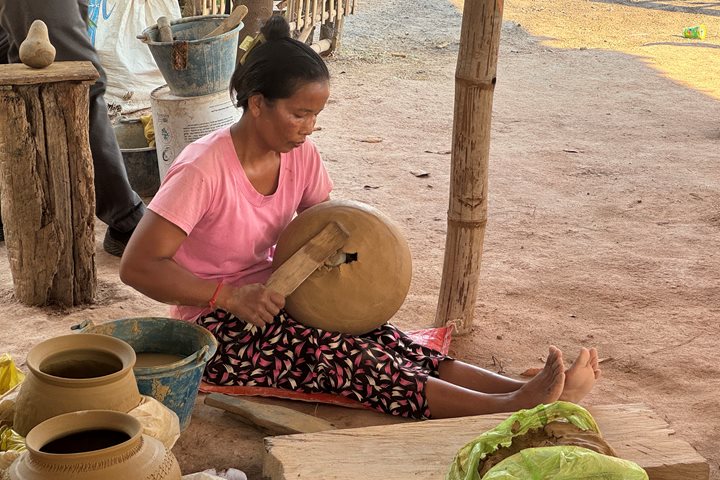Most of the places we have visited along the Mekong are rural villages where, because of the agrarian lifestyle and the midday heat, most day’s activities get started at dawn. Fortunately, for us however, our final day aboard Jahan begins mercifully around mid-morning. Once again, we boarded our local boats as this time we head ashore to visit Binh Tanh island, a medium sized farming community in Dong Thap province with approximately 20,000 inhabitants spread across some 2000 hectares. Along the way we see barges and trawlers running about, as well as fish traps and clumps of the ubiquitous water hyacinth. Binh Tanh island is home to numerous mat weavers, a local cottage industry. Rattan is collected from a type of reed grass which grows along the river banks. The women work in pairs, one on the loom and the other feeding in the strands. On average these mat weavers can earn around five dollars per day. Another stop on our visit here is to meet with the elders at the community hall and village shrine. These people share their life stories with us, having lived through some of the most tumultuous times in the last 70 years, from the end of the French period to the present day.
Once back on board Jahan, we continue down the Mekong. The river traffic is getting noticeably busier, as more barges and factories are seen along the banks, and more tourist craft as we get ever closer to Saigon.
After lunch we head into Cai Be, a district of around 300 thousand people. Once we enter the busy channel which flows through the settlement we pass another floating market and a Christian church. Our afternoon excursion takes us to a small factory run by a local family. They specialise in making products from rice and coconut. A mixture of rice flour and water is used to make the rice paper which is used to wrap fresh and fried spring rolls. The white flesh of a coconut is scraped out and pressed to extract the oily milk, which is boiled down to make a viscous caramel and then sets hard as coconut candy. Out the back, we see how “pop rice” is made as the kernel is cooked to make crispy snack. Finally, we learn that rice porridge can be fermented and distilled into rice whiskey. Bottoms up!






